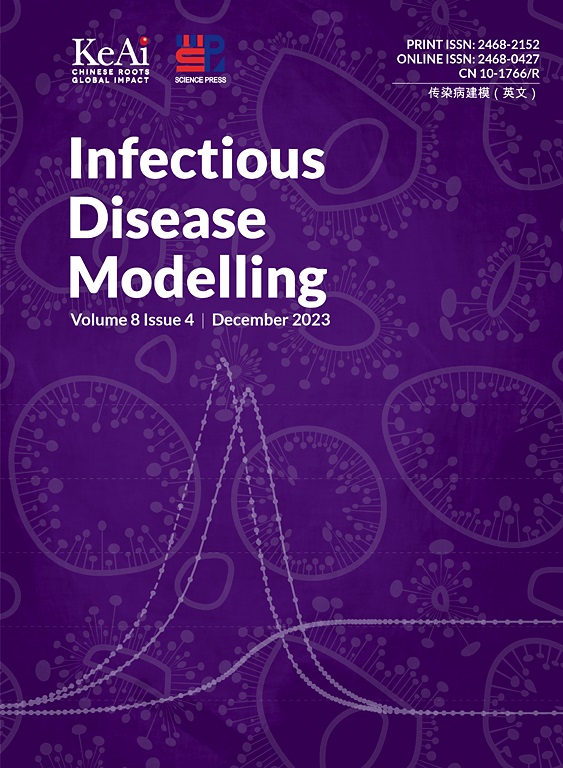COVID-19 在香港流行期间,人类流动性和天气条件对登革热蚊子数量的影响
IF 2.5
3区 医学
Q1 Medicine
引用次数: 0
摘要
背景虽然登革热病媒伊蚊预计将因气候变化而扩大,但人类流动性对它们的影响在很大程度上还不清楚。我们的目的是评估在香港 COVID-19 大流行期间,考虑到天气的非线性滞后效应,人类流动性对白纹伊蚊数量和广度的影响。在 2020 年 4 月至 2022 年 8 月期间,使用 Gravidtrap 采集了方法谷人类流动指数(包括住宅、公园和工作场所)和天气条件(总降雨量和平均气温)以及白纹伊蚊的数量和分布情况。结果在家中逗留的时间(即居住流动性)与蚊子数量呈负相关。根据模型推算,如果 2022 年的居住流动性恢复到疫情前的水平,蚊子数量将比实际观测值平均增加 80.49%。蚊子数量的相对风险(RR)与 4.5 个月后的低降雨量(50 毫米)有关,最高为 1.73,而降雨量为 300 毫米。3 个月内的强降雨(500 毫米)也与 1.41 的 RR 峰值有关。半个月后,温暖条件(21-30 °C,而不是 20 °C)与 1.47 的较高 RR 相关。本文章由计算机程序翻译,如有差异,请以英文原文为准。
Impact of human mobility and weather conditions on Dengue mosquito abundance during the COVID-19 pandemic in Hong Kong
Background
While Aedes mosquitoes, the Dengue vectors, are expected to expand due to climate change, the impact of human mobility on them is largely unclear. Changes in human mobility, such as staying at home during the pandemic, likely affect mosquito abundance.
Objectives
We aimed to assess the influence of human mobility on the abundance and extensiveness of Aedes albopictus, taking account of the nonlinear lagged effects of weather, during the COVID-19 pandemic in Hong Kong.
Methods
Google human mobility indices (including residential, parks, and workplaces) and weather conditions (total rainfall and mean temperature) along with Aedes albopictus abundance and extensiveness, monitored using Gravidtrap were collected between April 2020 and August 2022. Distributed lag non-linear models with mixed-effects models were used to explore their influence in three areas of Hong Kong.
Results
Time spent at home (i.e., residential mobility) was negatively associated with mosquito abundance. The model projected that if residential mobility in 2022 was returned to the pre-pandemic level, the mosquito abundance would increase by an average of 80.49 % compared to actual observation. The relative risk (RR) of mosquito abundance was associated with low rainfall (<50 mm) after 4.5 months, peaking at 1.73, compared with 300 mm. Heavy rainfall (>500 mm) within 3 months was also associated with a peak RR of 1.41. Warm conditions (21–30 °C, compared with 20 °C) were associated with a higher RR of 1.47 after half a month.
Discussion
Human mobility is a critical factor along with weather conditions in mosquito prediction, and a stay-at-home policy may be an effective intervention to control Aedes albopictus.
求助全文
通过发布文献求助,成功后即可免费获取论文全文。
去求助
来源期刊

Infectious Disease Modelling
Mathematics-Applied Mathematics
CiteScore
17.00
自引率
3.40%
发文量
73
审稿时长
17 weeks
期刊介绍:
Infectious Disease Modelling is an open access journal that undergoes peer-review. Its main objective is to facilitate research that combines mathematical modelling, retrieval and analysis of infection disease data, and public health decision support. The journal actively encourages original research that improves this interface, as well as review articles that highlight innovative methodologies relevant to data collection, informatics, and policy making in the field of public health.
 求助内容:
求助内容: 应助结果提醒方式:
应助结果提醒方式:


